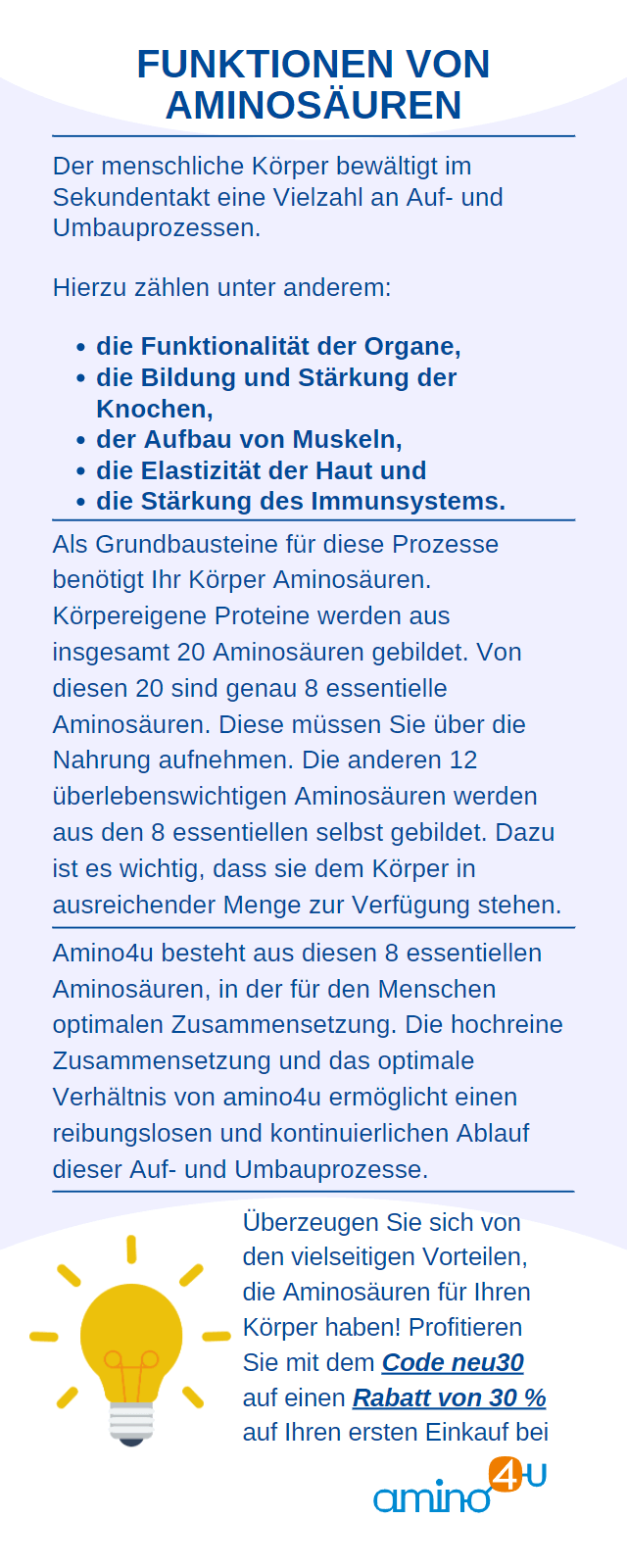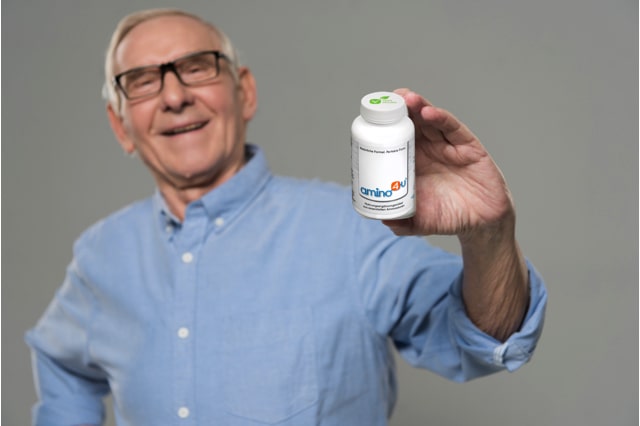When it comes to amino acids, the focus is often on the essential representatives of this group. Have you ever wondered how many non-essential amino acids there are and what their significance is? You can find out more about the topic here.
What are non-essential amino acids?
When it comes to proteinogenic building blocks, a distinction is made between essential and non-
essential amino acids . For simplicity and better understanding, the group of non-essential aminos is broadly defined and divided into
8 essential representatives and 12 others. The term "
proteinogenic " describes that these building blocks form the basis of the body's own proteins and
peptides . The group, which includes a total of 20 representatives, is particularly relevant for the body tissue and other functional areas, as they are even built into the human genome. It doesn't matter whether it's an
amino acid that comes from food or that we produce ourselves. Whether essential or non-essential, all proteinogenic building blocks are indispensable for our health.

The various non-essential amino acids list
The 8 essential amino acids leucine, isoleucine, valine, phenylalanine, threonine, tryptophan, lysine and methionine, which you also find
in our amino4u product , must be consumed with food. In contrast, our
organism forms:
- Alanine
- Arginine
- Asparagine
- Aspartic acid
- Cysteine
- Glycine
- Glutamine
- Glutamic acid
- Serine
- Tyrosine
- and proline
at least partially yourself.
Experts' opinions differ as to whether only alanine, aspartic acid, glutamine and serine belong to this group or whether asparagine, glycine and proline also belong. This different classification has something to do with different views on the evaluation of the
proteinogenic building blocks themselves. Depending on how the “
formation of protein building blocks ” is defined, the circle of the corresponding building blocks is narrower or wider. The human body primarily produces many of the building blocks itself, but can also absorb them.
Amino acid proteins such as glutamine are bound to other protein building blocks, but are also supplied to a large extent with food. Interestingly,
glutamine is the most freely available protein building block in the body. In addition to these two forms, a third group is distinguished. These building blocks, some of which are self-formed - these usually include arginine and histidine - can be synthesized by the organism itself in different phases of life, but must be supplied in other phases of life.

Tasks and supplies
Perhaps, like many people, you understand the addition “
essential ” to refer to the importance of
essential and non-essential amino acids for our health.
What are essential amino acids ?
How many essential amino acids are there ? The
8 essential amino acids cannot be produced by our body itself and must therefore be consumed daily through food. It is often assumed that the protein building blocks that are absorbed from outside are more important and have more important functions than the other building blocks. This assessment hardly does justice to the functions and tasks of non-essential protein building blocks. They also fulfill vital functions in our body. Each individual amino acid in the proteinogenic substance group plays its own role. It is therefore important to ensure that the levels of the protein building blocks produced by the organism itself are correct. This can be even more difficult in this area than with the essential building blocks. Because there must be other substances present - usually other
amino acids and vitamins from the
vitamin B family - from which building blocks such as alanine or tyrosine can be formed.
Synthesis using tyrosine as an example
Tyrosine is, among other things, the starting substance of messenger substances and neurotransmitters such as DOPA, dopamine and others. The amino acid is also essential for the formation of the
thyroid hormone thyroxine . The
amino acid itself is formed from phenylalanine. This example shows very clearly how building blocks that are supplied with food are linked to the non-essential ones.
Shortage
Since the need for protein and protein building blocks varies from person to person and in different life situations, deficiencies in all proteinogenic protein building blocks can occur. Factors such as age, stress and illness are just as relevant here as certain
diets such as veganism or vegetarianism.

In general, a possible increased supply of the building blocks considered essential also lays the foundation for the supply of all other
protein building blocks . However, it may make sense to additionally supply a single building block such as arginine or tyrosine in order to specifically support certain functional areas. For example, arginine is said to have a positive effect on
blood pressure and vascular tension. People with high blood pressure could benefit from this.

Conclusion
Proteinogenic amino acids are the basis for our health. Even
non-essential protein building blocks must be present in sufficient quantities so that all functions and protein formation work properly. For their synthesis, other protein building blocks and other micronutrients must be present.


 In general, a possible increased supply of the building blocks considered essential also lays the foundation for the supply of all other protein building blocks . However, it may make sense to additionally supply a single building block such as arginine or tyrosine in order to specifically support certain functional areas. For example, arginine is said to have a positive effect on blood pressure and vascular tension. People with high blood pressure could benefit from this.
In general, a possible increased supply of the building blocks considered essential also lays the foundation for the supply of all other protein building blocks . However, it may make sense to additionally supply a single building block such as arginine or tyrosine in order to specifically support certain functional areas. For example, arginine is said to have a positive effect on blood pressure and vascular tension. People with high blood pressure could benefit from this. 



